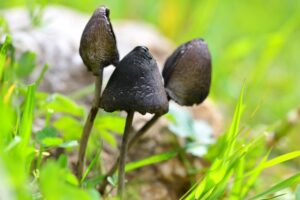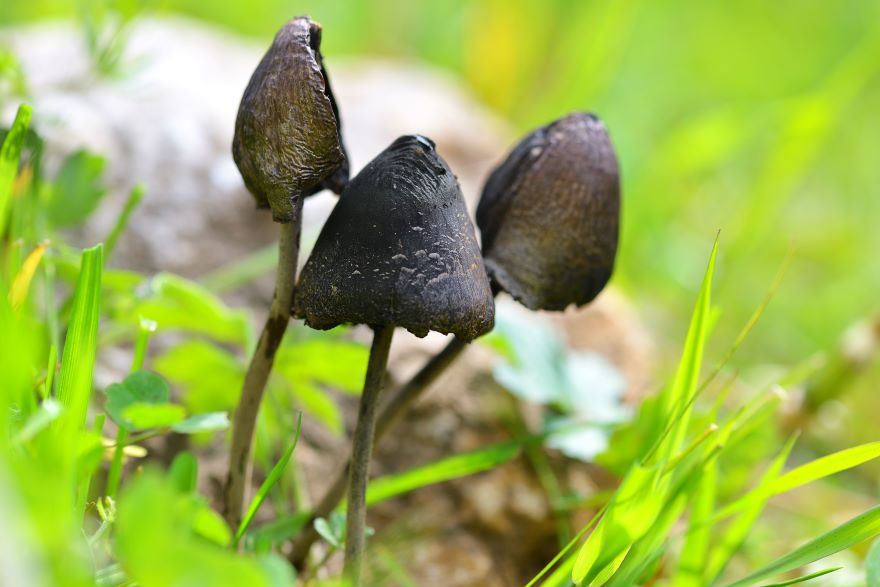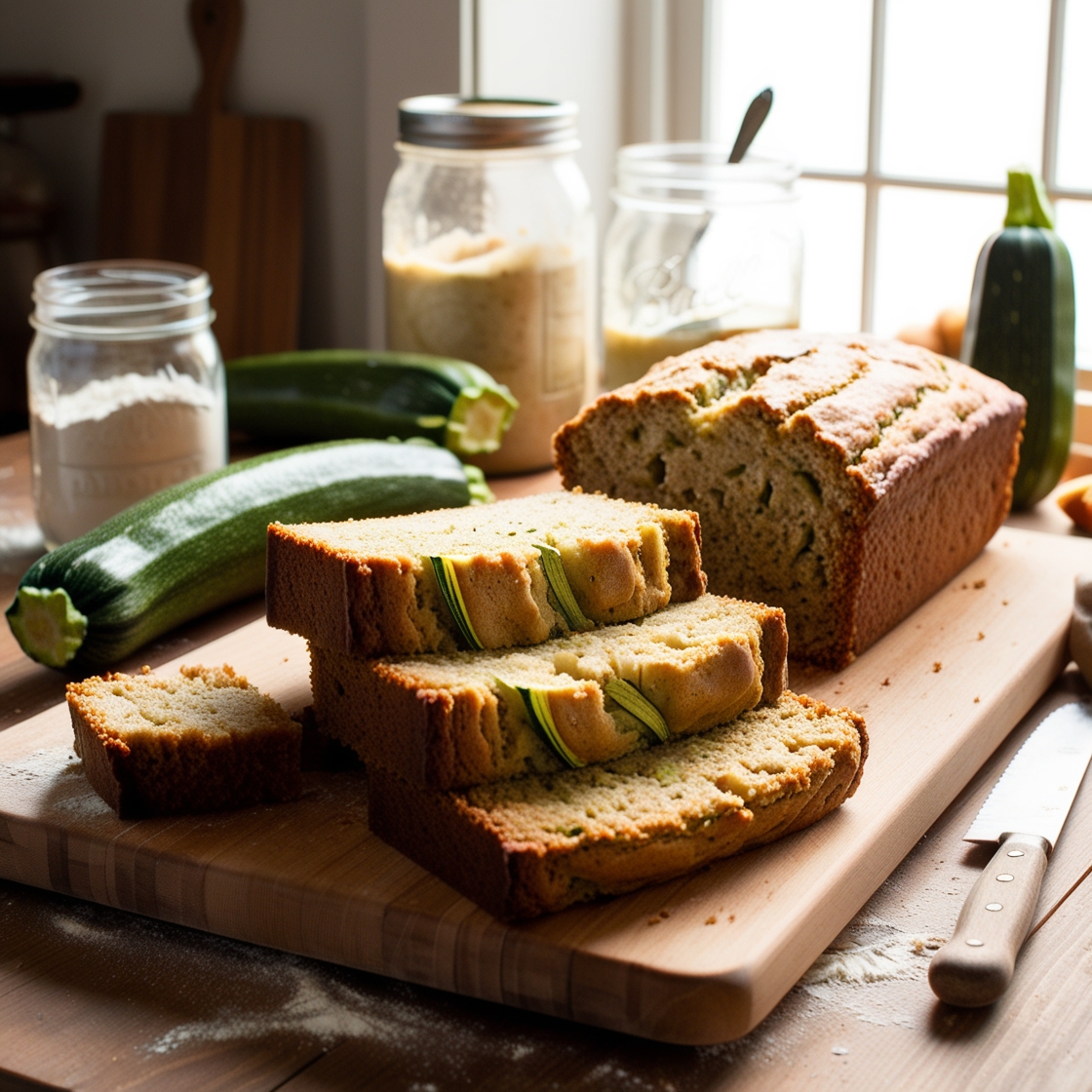Black mushrooms, also known as shiitake mushrooms, are a popular ingredient in Asian cuisine, prized for their distinct taste and potential health benefits. These edible mushrooms come in different varieties and can be found in various habitats across the globe. As a versatile ingredient, these mushrooms can be used in numerous dishes, either fresh or dried, to enhance their flavor and texture.

One of the most crucial aspects of using black mushrooms in culinary preparations is identifying them correctly. It is essential to know the specific species, features, and locations of the mushrooms to ensure that you’re working with an edible and safe option. Additionally, understanding the nutritional profile of black mushrooms can help you appreciate their value in a balanced diet and their potential contribution to your health.
Whether you’re an experienced forager or a curious home cook, knowing how to store and preserve mushrooms can make a significant difference in the shelf life and quality of these precious fungi. Proper storing techniques, like keeping them in a cool, dry place, can ensure that their delightful flavors and beneficial properties are retained for future culinary or medicinal use.
Key Takeaways
- Black mushrooms offer unique flavors and potential health benefits
- Proper identification ensures a safe and enjoyable culinary experience
- Storing and preserving techniques maximize shelf life and retain flavor
Identifying Black Mushrooms
When I’m out foraging for wild black mushrooms, there are a few key factors I look for in order to confidently identify them. Some of the most commonly encountered varieties include the black trumpet mushroom and black fungus. Here are a few aspects that I pay special attention to in order to identify the different types of black mushrooms.
First, I examine the shape of the mushroom. The black trumpet mushroom, for example, has a distinct trumpet-shaped cap with a wavy or lobed margin. The cap is usually 2-8 cm in diameter, sitting on top of a hollow stem that is often curved or twisted. This unique appearance helps me differentiate it from other types of black mushrooms.
Another important factor in identifying black mushrooms is their texture. Black trumpet mushrooms have a wrinkled or pleated surface texture, adding to their distinctive appearance. On the other hand, black fungus features a more gelatinous texture, which sets it apart from other black mushroom varieties.
When I come across a potential black mushroom, I also pay close attention to its environment. Black trumpet mushrooms, for example, are often found growing on the ground in deciduous forests during the late summer and autumn months, while black fungus mostly grows on decaying wood.
A helpful tool I often use for black mushroom identification is checking the spore color. To do this, I create a spore print by placing the mushroom cap on a piece of white paper and waiting for the spores to drop. Some black mushrooms will have a black or dark brown spore print, while others might have a lighter color.
In addition, I always make sure to observe the smell of the mushroom. Black trumpet mushrooms are known for their pleasant, earthy aroma, which can help me confirm their identity. Other black mushrooms may have a different, sometimes unpleasant odor.
Finally, for my safety, I always consult multiple sources or expert guidance before consuming or touching any wild mushroom. While foraging for these mushrooms, following these steps and familiarizing myself with their unique characteristics has been invaluable in helping me identify them accurately and safely.
Nutritional Profile of Black Mushrooms

Vitamins and Minerals
Black mushrooms, such as the black trumpet, are packed with a variety of essential vitamins and minerals. These mushrooms are known to contain calcium, a vital element for strong bones and teeth. They are also a good source of vitamin D, which is essential for calcium absorption and overall bone health.
In addition to calcium, black mushrooms are rich in various antioxidants that help protect our bodies from the harmful effects of free radicals. By including these mushrooms in your diet, you can boost your immune system and overall health.
Macronutrients
When it comes to macronutrients, black mushrooms contain protein and fiber while being extremely low in fat. In fact, according to Healthline, a serving of black fungus provides 5 grams of fiber and less than 1 gram of protein.
Here’s a brief breakdown of the macronutrients in black mushrooms:
- Protein: less than 1 gram
- Fat: 0 grams
- Fiber: 5 grams
Including black mushrooms in your meals not only adds a delicious, earthy flavor but also helps promote a balanced and healthy diet. I highly recommend giving these nutrient-rich fungi a try in your favorite dishes!
Culinary Uses of Black Mushrooms
When it comes to cooking with black mushrooms, I find they add a unique depth to the flavor of dishes. There are a variety of ways to incorporate these delicious mushrooms into your cooking, such as using them for flavor enhancement, cooking techniques, and recipe ideas.
Flavor Enhancement
Black mushrooms, such as the black trumpet or shiitake mushrooms, are known for their earthy and delicate flavors. They bring a rich umami taste to the dishes they’re cooked in. Adding black mushrooms to your dish can intensify the overall flavor profile and provide a unique aroma that appeals to our senses.
Cooking Techniques
Rehydrating: Before cooking with dried black mushrooms like shiitake, it’s essential to rehydrate them. Soak the mushrooms in warm water for at least 30 minutes. Once rehydrated, these mushrooms can be used in various dishes just like fresh ones.
Sauteing: One of the simplest and my favorite ways to cook with black mushrooms is to sauté them. Heat some oil in a pan, add chopped mushrooms, and cook for a few minutes until they release their moisture and become tender.
Braising: Braising is a technique that involves cooking the mushrooms slowly in a flavorful liquid, like a broth or sauce. This method allows the mushrooms to soak up the flavors of the liquid, resulting in an incredibly tasty dish.
Recipe Ideas
- Black Mushroom Soup: Use a mix of black trumpet and shiitake mushrooms to create a delicious, earthy soup that is comforting and full of flavor. Start by sautéing some chopped onions and garlic in oil, add the mushrooms and cook until tender, then add vegetable or chicken broth and let it simmer for 20-30 minutes.
- Stir-Fry with Black Mushrooms: These mushrooms are a fantastic addition to any stir-fry. Sauté the mushrooms with your choice of vegetables and protein, like tofu or chicken, then add a flavorful sauce to complete the dish.
- Mushroom Risotto: Incorporate the mushrooms into a classic Italian risotto for a delicious and comforting meal. Start by sautéing chopped onions and garlic in olive oil, then add Arborio rice and cook for a couple of minutes. Gradually add warm vegetable or chicken broth, one ladle at a time, until the rice cooks through. Finally, stir in the sautéed mushrooms and finish with some grated Parmesan cheese.
By exploring different cooking techniques and recipe ideas, you can make the most out of the delicious, earthy flavors these mushrooms have to offer.
Storing and Preserving Black Mushrooms
In my experience, properly storing black mushrooms is essential for preserving their flavor and texture. When it comes to fresh mushrooms, I’ve found that the key to making them last longer is to minimize their exposure to moisture. One helpful method to achieve this is by placing the unwashed mushrooms in a brown paper bag and folding the top over. Then, I store the bag in my refrigerator’s main compartment. This approach has helped me maintain the freshness of my mushrooms as the bag absorbs excess moisture, preventing them from getting soggy or moldy.
For dried black mushrooms, my preferred storage method is to keep them in an airtight container in a cool, dark place such as a pantry or cupboard. This helps protect the mushrooms from moisture and humidity, preserving their intense flavor and texture for a longer time. Whenever I need to rehydrate dried mushrooms, I simply soak them in warm water for about 30 minutes, and they are ready for cooking.
If you want to store the mushrooms for an extended period, you can also freeze them. To do this, I first gently wipe any dirt off the mushrooms with a paper towel or soft brush, and slice them if they are large. Then, I spread the mushrooms in a single layer on a parchment-lined baking sheet and place them in the freezer for a few hours until they fully freeze. Finally, I transfer the frozen mushrooms into a resealable plastic bag and store them in the freezer, where they can last for several months. It’s important to note that freezing may change the texture of the mushrooms, making them softer once thawed, but they will still work well in cooked dishes like soups, stews, and sauces.
Remember to always handle black mushrooms with care to maintain their quality and to enjoy their delicious, earthy flavors in your favorite dishes.
Foraging and Habitat of Black Mushrooms
As a knowledgeable forager, I always look forward to finding black trumpet mushrooms. These are some of my favorite wild mushrooms due to their smoky, rich flavor and fruity aroma. You can typically find them growing in mossy areas and hardwood forests, especially around oak trees. People commonly find these mushrooms in North America and Europe.
During my foraging trips, I have noticed that black trumpet mushrooms tend to thrive in damp or shaded conditions. That’s why it’s important to search in areas where the ground covers with leaf litter or moss. When I spot a potential mushroom, I make sure to positively identify it by checking its characteristics: funnel-shaped, with a hollow and fragile stem, and shades of black, brown, or gray color.
When foraging for black trumpet mushrooms, make sure to be cautious and avoid confusing them with other inedible or toxic mushrooms. Based on my experience, here are some tips that might help you in your search:
- Timing: Late summer to early autumn is usually the best time to find black trumpet mushrooms.
- Location: The mushrooms often grow in hardwood forests, especially under oak trees.
- Habitat: Look for damp, mossy areas where leaf litter is present.
- Weather conditions: Rainy or humid days will increase the chances of finding black trumpet mushrooms.
Remember, patience is key when foraging for wild mushrooms. Black trumpet mushrooms can be quite elusive, but once you find them, it’s like uncovering hidden culinary treasures. Make sure to harvest them responsibly, leaving some for others to enjoy, and allowing the mushroom population to continue thriving. Happy foraging!
Frequently Asked Questions
What is the difference between wood ear mushrooms and black fungus?
People often use wood ear mushrooms and black fungus interchangeably, but they do have some differences. People typically use wood ear mushrooms, also known as Auricularia auricula-judae, for their jelly-like consistency in Asian cuisine. On the other hand, black fungus, or Auricularia polytricha, is similar in texture but slightly more flavorful. Both varieties are rich in nutrients and add interesting textures to various dishes. You can find them in Asian grocery stores and sometimes in other supermarkets.
How can one identify and handle black mushroom poisoning?
To avoid black mushroom poisoning, it’s crucial to familiarize yourself with the different types of black mushrooms and their characteristics. If you suspect poisoning, seek immediate medical attention. The severity of poisoning depends on the type of mushroom ingested. Symptoms can range from stomach issues, hallucinations, liver and kidney failure, or even death. It’s essential to report any recent consumption of wild mushrooms to your doctor or poison control center.
What are some health benefits associated with consuming black mushrooms?
People know black mushrooms for their various health benefits.. They are a great source of dietary fiber, minerals, and antioxidants. Many believe that they support immune system function due to their beta-glucan content. Consuming black mushrooms can help improve digestion, reduce inflammation, and even lower cholesterol levels.
Can you provide a simple recipe for cooking black fungus?
Sure! One easy way to cook black fungus is by preparing a simple stir-fry. First, soak the dried fungus in water for about 30 minutes until it expands. Then, rinse it thoroughly and slice into bite-sized pieces. Heat oil in a pan and add garlic, ginger, and your choice of vegetables. Stir-fry for a few minutes and then add the black fungus. Season with soy sauce, oyster sauce, and a pinch of sugar. Continue stir-frying until the vegetables are tender. Serve over rice or noodles for a delicious and nutritious meal.
What precautions should be taken when finding black mushrooms in the yard?
If you find black mushrooms growing in your yard, it’s essential to exercise caution before deciding to consume them. Many wild mushrooms can be toxic, so proper identification is crucial. Consult a local mycologist or mushroom expert for guidance on identifying the mushrooms. Also, make sure to avoid consuming mushrooms from areas that may have been exposed to pesticides or other chemicals.
Are there any known side effects from eating black fungus?
In general, black fungus is safe to consume in normal quantities. However, some people may experience digestive discomfort after eating large amounts of black fungus due to its high fiber content. If you have a history of digestive issues, consider introducing black fungus into your diet gradually and monitoring your body’s response. Also, it’s essential to ensure you properly clean and prepare the fungus before consumption to avoid potential contamination or infections.

*We may earn a commission for purchases made using our links. Please see our disclosure to learn more.



